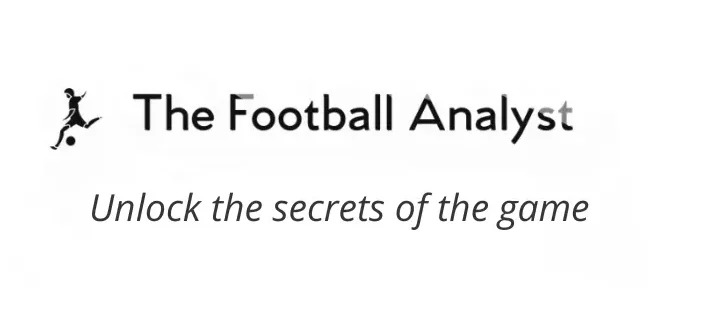In modern football, pressing has evolved from a stylistic choice to a key tactical pillar. Teams no longer just sit deep and absorb pressure—they hunt the ball high up the pitch, disrupt the opponent’s build-up, and force turnovers in dangerous areas.
But how do we quantify pressing intensity in a way that goes beyond the eye test?
One of the most widely accepted metrics used in football analytics today is PPDA, or Passes Per Defensive Action. It’s a simple yet powerful tool to evaluate how and when a team applies pressure.
What is PPDA?
PPDA (Passes Per Defensive Action) is a statistic that measures the number of passes a team allows the opponent to make before they attempt a defensive action—such as a tackle, interception, or foul—in the opponent’s defensive and middle thirds of the pitch.
In other words, it gives us an indication of how quickly and aggressively a team tries to regain possession during the opponent’s build-up phase.
The lower the PPDA value, the fewer passes a team allows before engaging defensively. This indicates a more aggressive pressing strategy. Conversely, a higher PPDA suggests a team is more passive, allowing the opponent more time and space to build play.
The Formula Behind PPDA
The basic formula is:
PPDA = Total Opponent Passes (in Defensive and Middle Thirds) ÷ Total Defensive Actions (in the Same Zones)
What’s counted?
- Passes: Only completed passes by the opponent in their defensive third and middle third are included.
- Defensive actions: Includes tackles, interceptions, fouls, challenges, and pressures that disrupt play. Again, only counted if they occur in the opponent’s defensive or middle third.
This focus on specific zones ensures that PPDA reflects a team’s pressing during the early phases of opposition build-up, rather than defensive actions near their own penalty area.
Interpreting PPDA: What Does It Tell You?
Low PPDA = High Pressing Intensity
A team with a PPDA of 6.0 allows the opponent only six passes on average before making a defensive intervention in pressing zones. This is typical of teams that play a high press and look to win the ball back quickly.
High PPDA = Low Pressing Intensity
A team with a PPDA of 18.0 is allowing the opponent 18 passes before attempting a defensive action. This usually indicates a team playing a mid or low-block, allowing the opponent more time and space on the ball, often focusing on compactness and counter-attacking opportunities.
Examples of High and Low PPDA Teams
To understand how PPDA varies between tactical systems, let’s look at a few real-world examples:
| Team (Style) | Typical PPDA | Pressing Strategy |
|---|---|---|
| Liverpool (2018–2021) | 5–7 | High press, intense counter-pressing |
| Leeds United under Bielsa | 5–8 | Aggressive man-to-man pressing |
| RB Leipzig (Red Bull Model) | 6–9 | Vertical pressing, high energy |
| Atletico Madrid | 15–20 | Compact low-block, strategic pressing |
| Burnley (under Dyche) | 18–22 | Deep defensive block, minimal pressing |
These numbers reflect how pressing intensity is a fundamental part of tactical identity.
When and Why to Use PPDA
Tactical Identity and Game Model
- Whether teams press high up the pitch or sit off
- If a manager has implemented a new pressing scheme
- How teams adapt their pressing based on opponent strength
Match-to-Match Analysis
- If a team pressed more in a particular game than usual
- How pressing intensity varied between halves
- Adjustments made in response to game state
Comparing Across Teams and Leagues
- Which teams press the most across Europe’s top five leagues?
- Are certain leagues more aggressive than others?
PPDA in Context: Strengths and Limitations
While PPDA is insightful, it must be interpreted in context. Here’s what it can and can’t tell you:
What It Reveals
- Pressing intensity in early build-up phases
- Changes in defensive behavior across matches
- Tactical differences between teams and managers
What It Doesn’t Show
- The success rate of the press (e.g. did they win the ball?)
- The exact location of pressing wins
- Whether the pressing created goalscoring chances
- Specific triggers or pressing patterns
To get a more complete understanding, PPDA should be combined with other metrics, such as:
- Turnovers in the final third
- Ball recoveries in specific zones
- Opponent pass completion under pressure
- Expected threat (xT) following pressing actions
PPDA and Tactical Flexibility
One of the most interesting uses of PPDA is in evaluating tactical flexibility. Teams often adjust their pressing strategy based on:
- Opponent quality
- Game state (whether leading or trailing)
- Fatigue, rotation, or squad depth
For example, a team like Manchester City might show a very low PPDA against a lower-tier opponent and a higher PPDA against another top-six club. Tracking passes per defensive action across different fixtures reveals how teams adapt their strategies to different challenges.
Conclusion
PPDA is one of the most accessible and effective metrics for analyzing pressing behavior in football. It offers a numeric way to measure how intensely and how often a team applies pressure in meaningful areas of the pitch.
However, this metric is not a complete picture on its own. To get the most out of this stat, it should be used alongside other data points and supported with video or tactical analysis.
In today’s game, where pressing is not just a tactic but often a core identity, understanding PPDA is essential for coaches, analysts, scouts, and fans who want to study the game with depth and clarity.
Further Reading
- Gegenpressing – Football Tactics Explained
- Rest-Attack – Football Tactics Explained
- Field Tilt – Football Statistics Explained
- Pressing Triggers – Football Tactics Explained
